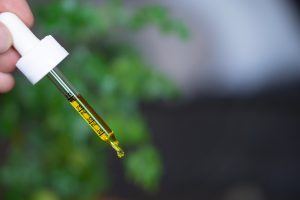What Causes Headaches and Easy Home Remedies to Try
When is the last time you experienced a headache or migraine? Chances are, pretty recently. According to research, “migraine is the 3rd most prevalent illness in the world [and] nearly 1 in 4 US households includes someone with migraine.” (source) With so many people around the world affected by these painful symptoms, it’s helpful to understand the factors that cause headaches and migraines. Read on to learn about what brings on headaches as well as our top tips for quick and effective headache relief and grab our FREE printable!
Factors that Lead to Headaches and Migraines
Headaches and migraines are usually symptoms created by the body as it deals with underlying problems or suffers from weakened functions. Chances are, if you feel a headache or migraine coming on, your body is struggling in a certain area (or several). To find lasting relief, getting to the bottom of the cause is key. Some contributing factors are to consider are:
Stress
Muscle tension
Dehydration
Poor nutrition
Hormonal imbalance
Allergies
Toxins
Viral or bacterial infection
Diseases and/or disorders, etc.

These factors can serve as clues for you and your healthcare provider regarding your health. For example, think back: have you recently skipped a meal or forget to drink water? If you have, this may not seem like a groundbreaking discovery, but you’ll be surprised how much these small necessities can impact your wellbeing when missed. The body needs a minimum of 2-3 liters (68-102 ounces) a day (for men and women) to function optimally, and if you are lacking fluid, your body is likely sending you a warning sign via symptoms like headaches. So, in cases like these, if you increase your water intake, the headache will likely go away in a day. We have included a FREE Healthy Habits Checklist printable below, use it to get a good look at your overall health and narrow down any factors that may be contributing to your headaches.

This can also be helpful in communicating to your healthcare provider regarding your symptoms and underlying causes. For your healthcare provider to develop an accurate diagnosis and treatment plan, it is crucial to be aware of these factors in your life and to let your doctor know. You may have heard of the different terms that patients use to describe their pain: tension headache, migraine, cluster headache, chronic, sinus pressure, hormonal, pressure, cervicogenic/vertigo and so on. Be sure to describe the frequency and location of the headache to your healthcare provider. This gives them some idea of which area in your body could be involved in creating the headache.
For instance, to a Gonstead chiropractor, if the headache occurs more often in the frontal area of the head, eyes, or temporal area, that is an indication to start with examining the upper neck/cervical spinal vertebrae dysfunction. If the headache is located more in suboccipital (top of the neck) area and back of the head, it would point to spinal vertebrae dysfunction in the lower neck/cervical and upper back/thoracic regions. This varies from patient to patient.
When the cause isn’t obvious, many people turn to medications to relieve the pain. We recommend starting with chiropractic treatment as it is shown to eliminate or significantly reduce the frequency and severity of headaches and migraines. Here are some more therapies and home remedies to try alongside chiropractic adjustments.
Download FREE Checklist Printable
Remedies to Try

Massage is a great therapy if the headache is a result of a tensed muscle group or a toxin. Massage therapy may release significant amounts of lactic acid and other toxic components into the body to expel them naturally. So, be sure to drink plenty of water before and after your massage session as this helps detoxification in your body.
There are many other helpful home remedies and therapies that you can try immediately. Generally, ice is an amazing source of relief for headaches or migraines (and more), even more so than heat. For proper use, place an ice pack on the suboccipital area and/or directly on top of the headache. You can also put ice on the eyelids if a migraine persists. If the ice is too cold, wrap the pack in a paper towel or thin cloth.
Honestly, one of the most effective home remedies is…SLEEP. We love this amazing remedy because it is fast, fun, and free! If you are able, try changing into some comfy clothes and taking a quick power nap (no longer than 30 minutes because you may feel groggy and the headache may worsen).
Lastly, another home remedy to try is applying peppermint essential oil to the area of the headache. Make sure to dilute the essential oil with a carrier oil such as olive oil and mix well before use. The cooling effect of this amazing oil often helps relieve tension and pain, so it’s also very helpful to use in hot epsom salt baths when you have full body muscle tension! (Read more about peppermint oil here.)
We hope these remedy ideas and free printable are helpful for you. If you’d like to consult our Gonstead chiropractor for constant headaches or migraines, contact us at Alight Chiropractic today!
Reference: mayoclinic.org, webmd.com, ncbi.nlm.nih.gov, stanfordhealthcare.org, gonsteadseminar.com





